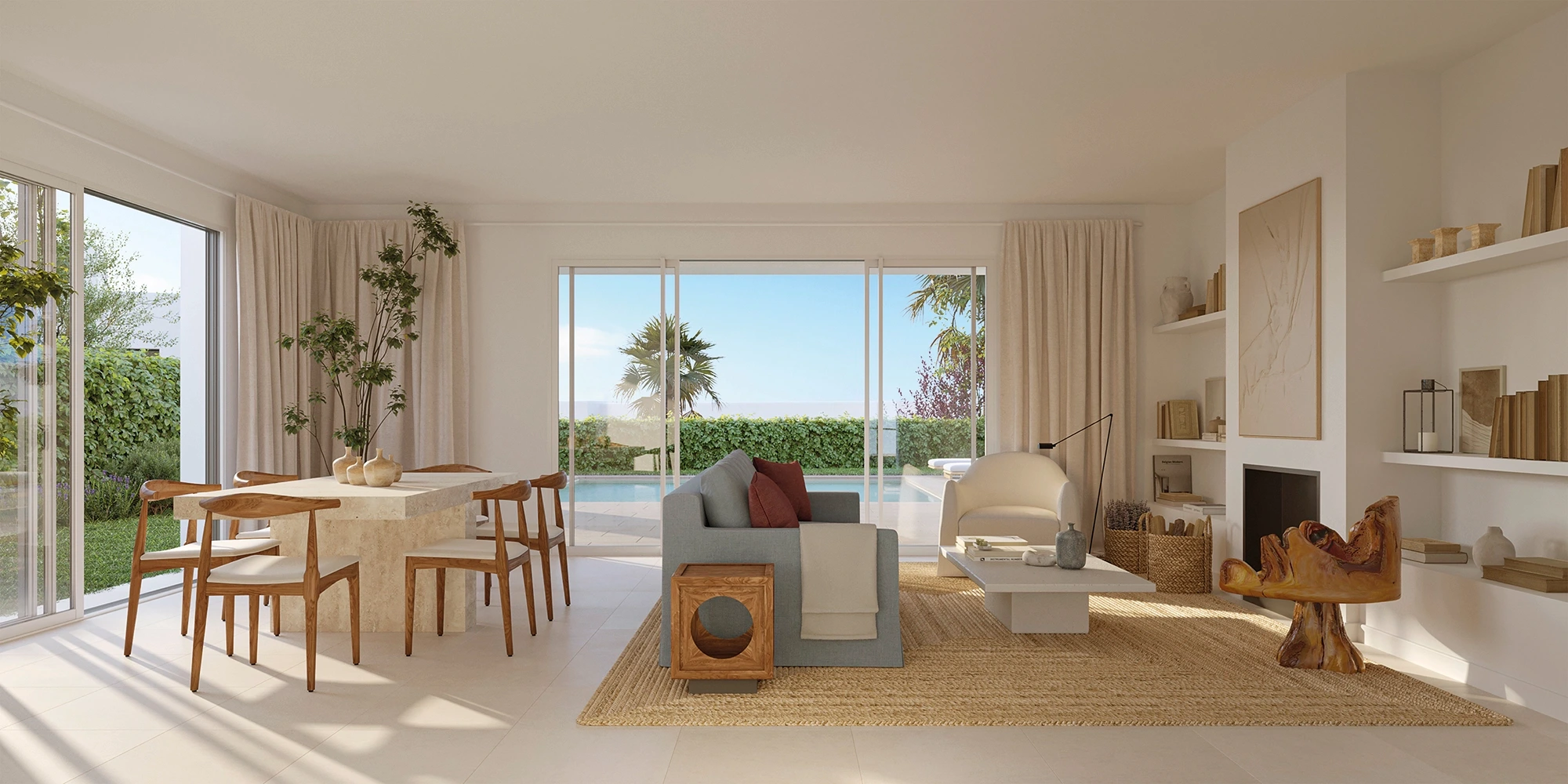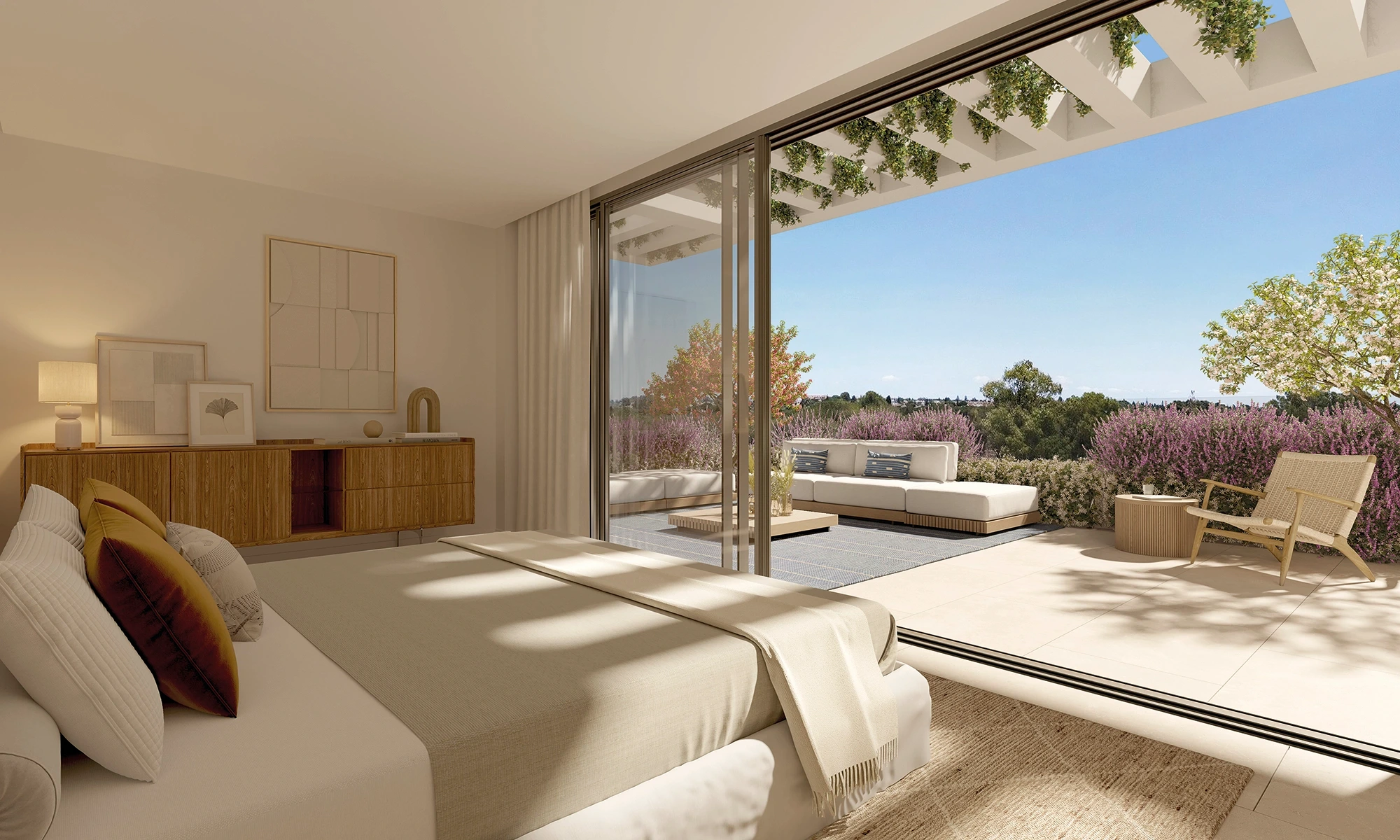- ACCIONA
- About us
- Sustainability and innovation
- Regenerative solutions
REGENERATIVE SOLUTIONS
A considered bioclimatic design, minimal energy and water demands and a premium, high-comfort interior: just some of the signature features of an ACCIONA development.
BIOCLIMATIC DESIGN
Each development is designed to make the most of its climate and environment, with systems in place to reduce consumption and optimise energy use. All ACCIONA designs meet Nearly Zero-Energy Building (nZEB) requirements and use locally sourced materials when possible. Building façades are carefully designed to prevent thermal bridging, combatting heat loss and enhancing user comfort.
ELECTRICITY AND WATER CONSUMPTION
At ACCIONA, we’re serious about efficiency. We select the highest-performance equipment and advocate on-site renewables (air-source/geothermal heat pumps or photovoltaic/solar thermal panels) and energy-saving heating systems (such as underfloor heating). We encourage responsible water consumption both within and outside the home or office, giving users the tools to monitor their use with impressive precision and channelling harvested rainwater to green and landscaped areas.

Indoor comfort and quality
We plan the orientation of our buildings almost to the millimetre for optimum natural comfort, taking advantage of cross-ventilation to maintain an ideal temperature without undue strain on resources. Natural light is a priority right from the start, with windows and outdoor areas like gardens and terracing working together to brighten and uplift the space.



*The information and images contained in this document are included for illustrative purposes and are not contractually binding. Furnishings and landscaping not included.
BIODIVERSITY
At ACCIONA, we know that our activities have the potential to affect biodiversity, both directly and indirectly.
Land conversion is a significant factor in biodiversity loss, causing disturbance to the soil and fragmenting habitats. We carefully evaluate the specific implications of each development for different species and ecosystems, so we can prevent and rectify any adverse effects.
ACCIONA adopts the mitigation hierarchy approach, which involves identifying, avoiding and minimising negative impacts, restoring damaged ecosystems and using biodiversity offsetting to achieve a net positive outcome.
Our in-house Environment and Biodiversity Unit is tasked with upholding the principles set out in our Biodiversity Policy and seeking a balance between wildlife and habitat conservation and the success of ACCIONA’s core business.

THE CIRCULAR ECONOMY AND OUR VALUE CHAIN
ACCIONA favours the use of materials that diminish a building’s carbon footprint (encompassing design, choice of materials and resource efficiency). Our properties are built with long-lasting, sustainable materials free of harmful substances. Natural materials are often the best choice — eco-friendly paints, for example, are gentle on both the planet and our health, being humidity regulating and low in volatile organic compounds (VOCs). This is good news for indoor air quality, user well-being and an all-round healthier home.
We prefer timber products and other materials that can be recycled or reused and come with an Environmental Product Declaration. This information helps us identify products guaranteeing whole life-cycle sustainability. ACCIONA’s circular construction approach avoids unnecessary waste during demolition, groundworks and development. At every stage, materials and components are reused or recycled when possible, and preferably in situ.

MANAGING OUR SOCIAL IMPACT
ACCIONA conducts a Social Impact Analysis and follows a set of principles for inclusive and accessible design, ensuring that our buildings relate to their settings in a respectful and complementary way. Tenant safety, health and well-being is paramount, which is why active construction sites are carefully managed to minimise disruption such as noise, dust and increased traffic.
MOBILITY
As a company, we encourage the use of public transport and active travel to curb emissions and tackle congestion. We believe that the future of mobility is electric, service-based and, ideally, locally self-sufficient.

URBAN REGENERATION
ACCIONA is committed to supporting urban regeneration in run-down or unviable areas. Today, we are working to give buildings and neighbourhoods a new lease of life, in the hope of starting a wave of change that ripples across entire cities.







